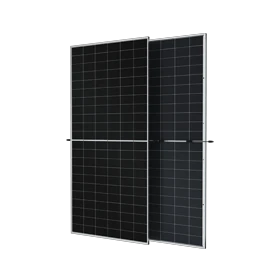Cost Analysis of Solar Panel Installation for a Two-Bedroom Home
The Cost of Solar Panels for a Two-Bedroom House
As the world increasingly embraces renewable energy, solar power has become a popular choice among homeowners looking to reduce their carbon footprint and lower energy bills. For those living in a two-bedroom house, understanding the cost of solar panels is crucial when considering this investment. This article will explore the various factors that affect the pricing of solar panels, typical costs for a two-bedroom house, and the potential long-term savings associated with their installation.
Understanding Solar Panel Costs
The cost of solar panels can vary widely based on a variety of factors, including the size of the system, the type of solar panels selected, installation costs, and geographic location
. On average, the cost of solar panels ranges from $15,000 to $25,000 for a typical two-bedroom home, depending on energy needs and local incentives.Size of the System
The size of the solar panel system required will depend on the household's energy consumption. An average two-bedroom house typically uses about 500 to 1,200 kWh of electricity per month, translating to an average of 6,000 to 14,400 kWh annually. To determine the size of the solar system needed, homeowners can divide their annual energy use by the amount of sunlight received in their region, often measured in peak sun hours. For instance, a home using 8,000 kWh annually in an area receiving 5 peak sun hours per day would require a system size of about 5kW.
Types of Solar Panels
There are three main types of solar panels monocrystalline, polycrystalline, and thin-film. Monocrystalline panels are generally more efficient and have a longer lifespan, but they also come at a higher cost—ranging from $1 to $3 per watt. Polycrystalline panels are less expensive but offer slightly lower efficiency, typically costing between $0.90 to $1.50 per watt. Thin-film panels are the least efficient and are based on newer technology, costing about $0.50 to $1.00 per watt. The choice of panel will significantly influence the overall cost of the solar array.
cost of solar panels for 2 bedroom house

Installation Costs
Installation costs can vary based on the complexity of the project, the roof's condition, and labor rates in the local area. These costs typically account for 10% to 20% of the total solar project cost. It's advisable to obtain quotes from several reputable solar installers and check their credentials. Many offer financing options or incentives that can make the installation more affordable.
Incentives and Financing
Homeowners should also consider federal, state, and local government incentives for solar panel installations. In the United States, the federal solar tax credit allows homeowners to deduct a significant percentage of the cost of installing solar from their federal taxes, making it an attractive incentive. Additionally, some states offer rebates, grants, and special financing options that further reduce the upfront costs.
Long-Term Savings
While the initial cost of installing solar panels may seem high, the long-term savings can be substantial. Most solar systems pay for themselves within 5 to 10 years through reduced electricity bills. Moreover, solar panels can increase a home's value, making it a financially sound investment—not to mention the positive environmental impact. Homeowners can expect to see a 20% to 30% return on investment, making solar energy not only a sustainable option but also a wise financial one.
Conclusion
Investing in solar panels for a two-bedroom house can significantly reduce energy costs and contribute to a greener future. While the upfront costs might be daunting, the long-term benefits, coupled with various incentives and financing options, make solar energy an appealing choice for many homeowners. As technology advances and prices continue to drop, now is the perfect time to consider how solar panels can benefit your home and the planet.
-
String Solar Inverter: The High-Efficiency Solution for Smart Solar EnergyNewsJul.14,2025
-
Revolutionizing Rooftop Energy with the Power of the Micro Solar InverterNewsJul.14,2025
-
Power Independence with Smart Off Grid Solar Inverter SolutionsNewsJul.14,2025
-
On Grid Solar Inverter: Powering the Future with Smart Grid IntegrationNewsJul.14,2025
-
Monocrystalline Solar Panels: High-Efficiency Power for the Future of Clean EnergyNewsJul.14,2025
-
Bifacial Solar Panel: A Smarter Investment for Next-Generation Energy SystemsNewsJul.14,2025







